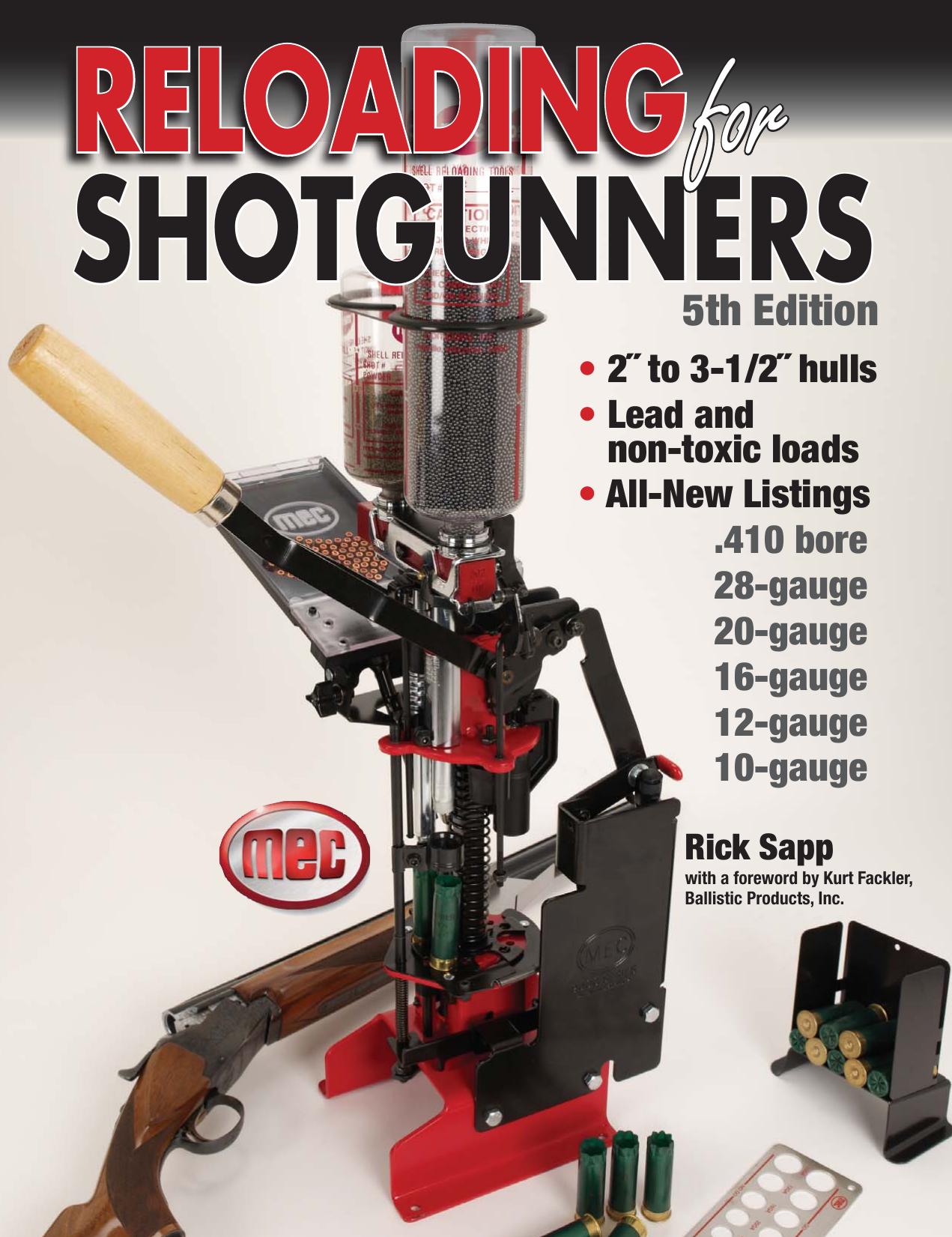Reloading for Shotgunners by Rick Sapp

Author:Rick Sapp [Sapp, Rick]
Language: eng
Format: epub, pdf
Tags: ebook, book
ISBN: 9780873498135
Amazon: 0873498135
Publisher: Krause Publ
Published: 2005-07-29T04:00:00+00:00
Kent builds 12-gauge non-toxic tungsten-matrix shells in its Impact line for waterfowl and for turkey hunting. The turkey-branded shells are designed for 3-inch chambers: 1-5/8 ounces of #5 shot delivering 1,300 fps muzzle velocity.
Think of potential destructive ability as the difference between swinging at a baseball with a Louisville Slugger and a plastic whiffle-bat. The hollow, lightweight plastic bat cannot hit a ball out of the infield whereas in competent hands there is almost no limit to the effectiveness of the sculptured hardwood bat.
Losing density, by any percentage, means losing effectiveness in both lethality and range. The bottom line is that a denser pellet is a better pellet. If a tungsten pellet is launched at 1,300 fps and a bismuth pellet is launched at the same velocity, it is clear that the tungsten pellet will fly farther, and straighter, and strike with greater force.
The combination of powdered tungsten with iron is not the only possibility for non-toxic tungsten-based shot. Powdered tungsten is also blended with synthetic polymers such as nylon, but Eley in England found that producing uniform shot was difficult and switched to the production of bismuth.
Kent however has persevered in tungsten (as well as lead, bismuth and steel) and produces tungsten-matrix shot in its Impact Line for 12- and 20-gauge guns, which the company says, “is physically and ballistically comparable to lead.” Apparently, the trick with tungsten was to find a thicker polymer amalgam, one that would suspend particles more uniformly. Inside this polymer matrix, the tungsten would then provide plenty of density, but would be prevented from scarring and was therefore safe to use in any shotgun barrel, new or old.
A Note About “Molyshot”
The ideal lethal load hits with the highest number of pellets. That load must propel a pellet of the right size and weight at the best possible velocity and deliver maximum energy at range. Whew! It is a big order, especially with moving targets and that is most of what you fire at with a shotgun.
Herein is the problem with ultra-hard shot like steel and some of the experimental non-toxic loads. When they hit a duck or goose, they retain energy and pass completely through the bird. That is not the ideal situation. Ideally, your pellets will deform inside the bird, flattening and transferring shock and awe to the body and wings.
You occasionally still hear the term “molyshot,” although it is now as archaic as a good manners. Molyshot was comprised of molybdenum disulfide and various non-toxic elements and polymers. It was a true, if temporary, step forward, in the development of current non-toxic tungsten-polymer shot.
Download
This site does not store any files on its server. We only index and link to content provided by other sites. Please contact the content providers to delete copyright contents if any and email us, we'll remove relevant links or contents immediately.
Whiskies Galore by Ian Buxton(41941)
Introduction to Aircraft Design (Cambridge Aerospace Series) by John P. Fielding(33095)
Small Unmanned Fixed-wing Aircraft Design by Andrew J. Keane Andras Sobester James P. Scanlan & András Sóbester & James P. Scanlan(32767)
Craft Beer for the Homebrewer by Michael Agnew(18200)
Turbulence by E. J. Noyes(7983)
The Complete Stick Figure Physics Tutorials by Allen Sarah(7339)
Kaplan MCAT General Chemistry Review by Kaplan(6903)
The Thirst by Nesbo Jo(6882)
Bad Blood by John Carreyrou(6586)
Modelling of Convective Heat and Mass Transfer in Rotating Flows by Igor V. Shevchuk(6408)
Learning SQL by Alan Beaulieu(6239)
Weapons of Math Destruction by Cathy O'Neil(6221)
Man-made Catastrophes and Risk Information Concealment by Dmitry Chernov & Didier Sornette(5958)
Digital Minimalism by Cal Newport;(5712)
Life 3.0: Being Human in the Age of Artificial Intelligence by Tegmark Max(5520)
iGen by Jean M. Twenge(5387)
Secrets of Antigravity Propulsion: Tesla, UFOs, and Classified Aerospace Technology by Ph.D. Paul A. Laviolette(5338)
Design of Trajectory Optimization Approach for Space Maneuver Vehicle Skip Entry Problems by Runqi Chai & Al Savvaris & Antonios Tsourdos & Senchun Chai(5040)
Pale Blue Dot by Carl Sagan(4961)
